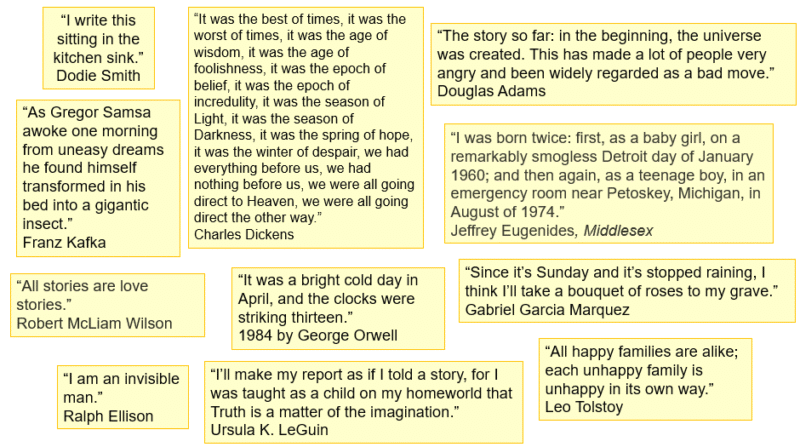Humans love contradictions. We hate them too. We instinctively recognise them and outwardly purport to not know what they are. We can subconsciously solve them, but consciously we usually can’t.
Illustration. Here are a selection of some of the most admired opening lines from classic books. What do they have in common?

Answer: They all contain a contradiction. A contradiction that instantly hooks us into wanting to keep reading. A hook that is picked up by our salience network.
The salience network is a crucial neural network connecting various different parts of the human brain. It is responsible for detecting and filtering important information from the environment. It helps prioritise sensory stimuli, emotional cues, and other relevant signals to guide behaviour and attention. The network plays a vital role in various cognitive functions, including decision-making, emotion regulation, and social behaviour.
The salience network also plays a significant role in conflict monitoring and resolution within the brain.
The anterior cingulate cortex (ACC), a key component of the salience network, is particularly involved in conflict detection. It identifies discrepancies between different pieces of information – such as when we read an apparently nonsensical opening-line of a novel – or between internal goals and external stimuli. When conflict is detected, the ACC signals other brain regions to engage in cognitive control processes, such as attentional allocation, inhibition of irrelevant information, and decision-making.
Moreover, the salience network interacts with other brain networks, such as the executive control network and the default mode network, to facilitate conflict resolution. By integrating information from various sources and coordinating activity across different brain regions, the salience network helps prioritise relevant information and guide adaptive behaviour in the face of conflicting demands.
The reason we love reading stories – especially ones with great opening-lines – is that they teach us how the protagonist can overcome impossible odds to solve an ‘Ordeal’ and thus resolve the contradiction that hooked us in the first line. Stories are built on contradictions. We love stories. Therefore, we love contradictions. In the world of fiction at least. In the world of reality, after the age of eight we get taught how to make trade-offs and compromises and start to develop our zero-sum bias. After a few years of this ‘education’ we forget the lesson that stories are intended to convey. We call this replacement compromise perspective ‘optimisation’ to make it sound like a good thing. It isn’t a good thing. It simply means we turned ourselves into Sisyphus. Rolling immense compromise boulders up mountains and then watching them roll back down every time they near the peak. All the while, a distant clock striking thirteen.
